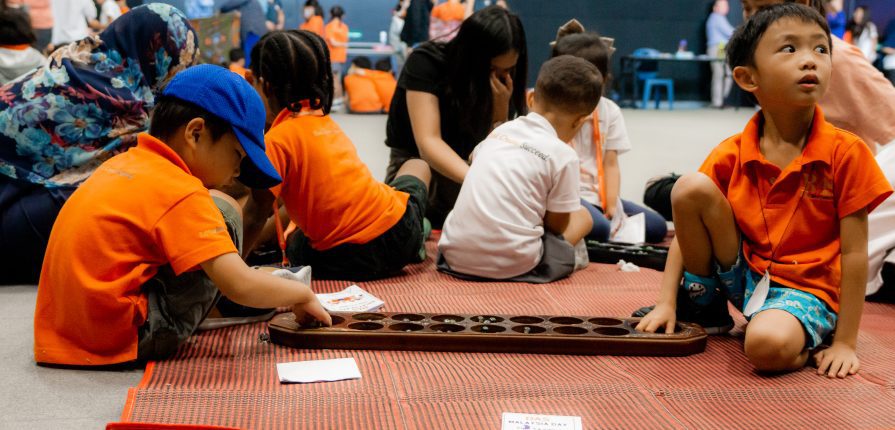Hari Merdeka!
Each year on August 31st, Malaysia celebrates its independence from British colonialism by throwing national festivals throughout the nation such as the Merdeka parade and enjoying the various promotions and activities. A country with such a rich history and culture should be celebrated for its freedom and unity among the multicultural nation. While current-day Malaysia is known for its multiculturalism and unique traditions, it’s time to take a look into the past as to how the country was united.
Prehistoric Malaysia – Early 1400s
The earliest evidence of humans living in present-day Sarawak was a human skull that can be traced back to 40,000 years ago. Further down in history, approximately 10,000 years ago, a group of people referred to as the Proto-Malay (or “Melayu Asli” original Malay) are believed to have originated from Southwest China and later relocated to Indonesia. Around 300 BC, the Deutro-Malays became the main inhabitants and pushed Proto-Malays to the north, thus becoming the early ancestors of the Malaysian people.
With the slow formation of the states, Malays and other parts of Southeast Asia were greatly influenced by Indian culture. This also allowed for commerce and trade to take place between Indians and Chinese people as well. The Malays adopted the religion of Buddhism and Hinduism around the 1st century and later relied on Sanskrit as the main writing system.
Around the 1200s, Islam emerged and was adapted by Malay elites as Arab traders fled to Malaysia, taking over the influence of Hinduism and Buddhism. Many in this era converted to Islam including the founder of Melacca, Parameswara, also known as Iskandar Shah. As the years passed, the involvement of Chinese trade in Malacca allowed for relationships to flourish among each other and an alliance was established to defend against the Siamese and surrounding countries from their attacks.
Over the last decade before the colonial age, Malacca reigned as the birthplace of Malaysian culture. A place where elements from India, China, and indigenous Malay cultures are combined with each other along with Islamic and Buddhist components. Bahasa Melayu also became the official language, where its roots are found in Arabic, Sanskrit, Tamil, and other European languages such as Dutch and English.
Colonial Age (1511-1941)
From 1511, Malaysia was under constant conflict due to Portugal’s colonial claim. They seized Malacca in order to establish a Portuguese trading port, as it was the perfect trading location for Arabs, Indians, and Chinese. When the Sultan of Malacca refused, war ensued and lasted for 40 days. The Sultan’s son, Sultan Alauddin Riayat Shah II, fled to the south and founded what is now known as the state of Johor. He ruled as a sultan and fought to combat in the war from 1528 to 1564. In 1641, the Dutch East India Company, which was also at war with Spain, was able to force the Portuguese out of Malacca with the help of other allies.
Englishmen visited Penang in 1786, but only had no interest in taking over the land until 1795. At that point, the British dominated the Dutch rule in Malacca and slowly started to take over all of the peninsula. In 1840, they annexed Sabah and Sarawak to the British Crown Colony and continued to rule the peninsula, previously known as Malaya, and extract resources such as spices, rubber, and tin. They also moved Indians to the country in order to compensate for the shortage of workers.
World War Ⅱ
In the 1930s, Malaya believed any threats from Japan would come from the south, rushing to build a strong naval base in Singapore. To their surprise, Japan’s invasion came from the north, where there was no air or land protection. By 1942, Malaya’s water supply and defense ran short, forcing them to surrender to the Japanese 1942. Japan’s occupation was short-lived, lasting only until 1945, but it was the most controlling and fatal colonization Malaya underwent. They eventually surrendered due to the bombings that occurred in Hiroshima and Nagasaki, restoring British rule.
Malaysia’s Independence
The British planned to create a Malaya Union in order to bring eleven states under British control. They promised there would be equality among Malays, Chinese, and Indians, but even then, the Malay Sultans nationalists refused to be under their control. This lasted until 1948, where Malay rulers and the British government came to an agreement to allow the Federation of Malaya to be controlled by Malay rulers. Malaysia was finally fully independent from British colonial rule on August 31, 1957. The states under the Malaysian Federation included Johor, Kedah, Kelantan, Negeri Sembilan, Pahang, Perak, Perlis, Selangor and Terengganu, Malacca and Penang. Singapore, Sarawak, and Sabah (previously known as North Borneo) were later federated in 1963, but Singapore later became independent in 1965.
Merdeka and Malaysia Day
Malaysia has fought through many hardships throughout its history until the day it established its independence. For this reason, it is essential to commemorate the efforts and the rich culture that has come together from different ethnicities.
Merdeka (August 31st) and Malaysia Day (September 16th) are two national holidays that celebrate the independence of Malaysia from British rule. Merdeka celebrates the independence of the Malaysian Federation which was established in 1957, while Malaysia Day celebrates the federation of Sabah and Sarawak.
So while Malaysia’s independence occurred on August 31st, Malaysia acknowledged its unity on September 16th. Moreover, they place a higher value on stating independence for 65 years, starting from 1963 rather than 1957 to be more inclusive of the states in East Malaysia.
Written and researched by Jumana Raggam


